Japan is still one of the worst people in the world.Seeing their diet shows why this is how we can benefit from this.
If we want to lose weight, we often start with a strict diet, which is then not executed in a few days or weeks for all strict rules.In fact, very simple: let's see the worst people - in Japan.
There they treat food with respect and enjoy it.
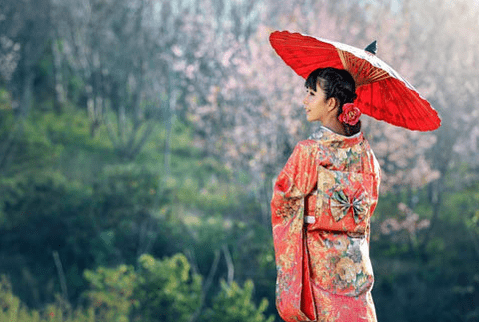
Japanese diet
Travel to Japan.Product choice
Lotssquirrel: The main ingredients of the Japanese diet are fish, rice and vegetables.And soybeans and fruits.
After being checked more closely, this is like
- Rich in protein,
- low -fat
- And gluten -free diet.
- FishContains many useful omega-3 fatty acids.
- VegetablesThey contain the needed vitamins and fill the stomach well.
- Do not be afraid of carbohydrates: At first sight it seems to be with the phobia of carbohydrates everywhere that large amounts of white rice are eaten in Japan.Obviously, this is not too dangerous for Flae defective.RiceIt does not contain gluten and contains little fat.
- Soupand fermented milk products.That they barely eat in Japandairy product.
- AlthoughcerealsSometimes they are used, for example, in the form of pasta, they are not main food products.
- MeatThey eat much less than fish.
- But Japanese people likeEnzyme productsLike miso or kimchi.They contain probiotics that are useful for the intestine.This, in turn, plays a big role in losing weight.And one more thing we can adopt from Japan: They eat a lot of soup even for breakfast.
Travel to Japan.Cooking method
In Japan, food is mainly steamed, boiled or baked.All types of preparations are carried out almost without fat.
Of course, there are also fried foods, for example, a popular tempo, but then used as a small amount of side dishes.In Japan, the presentation and design of dishes is also important.Asian products are useful, tasty and contribute to weight loss.
In Japanese, eating consciously
In Japan, food is considered an independent action where you have to concentrate.Food must be eaten slowly and consciously and enjoy it.Therefore, traditionally not eaten "by the way" or "go".Namely, both when walking, and on the subway, or while working, or when watching TV.Of course, this is not prohibited, but, in reality, diet, especially when losing weight, must be done consciously.With this food absorption method, feeling full feels.Because work days and school days in Japan can be very long, it also means that there is a longer rest for food.AlsoportionLacking in Japan.You will not see the excess plate of food.
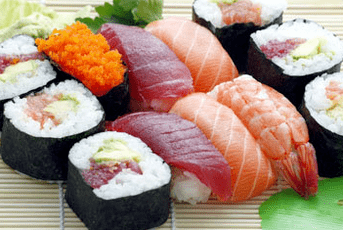
Weight weighs with fast food
Slow food (slow food)In Japan in trends.If you imitate this, you can lose weight intentionally, not starving.However, it should be noted that in Japan more and more emerged from the west of new trends: fast food, for example.Previous habits in food disappear ...
It has consequences: Japan also recovered when they said goodbye to their traditional food!However, this country also struggled quite hard with this, Japan in 2009 took decisive action against the cause of being overweight.Regular medical tests are carried out in all cities and large companies.The company must pay more for health insurance if their employees are overweight or have high blood pressure, high blood pressure or increased blood sugar.Considering such steps, many Japanese prefer to return to miso-spoke with fish rather than toast in the morning.
How long does the Japanese diet last?
Time and possible weight loss can vary.The Japanese diet must be observed at least four weeks.This time it is enough to stimulate fat burning.There are people who lose from3to8One kilogram in four weeks with a diet.The results can be increased even more if you start a sports program.
- During the diet, many vegetables and fiber are used.Diet plan is provided1200 caloriesper day.
- It is proposed mainly rice, fish and vegetables.
- Drinks: lots of green tea and water.
- Take care of fresh cooking - there are no finished products.
- Take sports or practice for durability.
- Plan enough time to cook.
Consult a doctor.- Every change in the diet can cause disease.The reason is mainly mental and because of low calorie consumption.Consult a doctor if the symptoms are maintained.
The advantage of the Japanese diet
Japanese diet- This is a healthy mixture diet.Many attention is given to fresh products and a balanced composition of dishes.
Disadvantage of Japanese Diet
- Low calorie consumption, this can cause feelings of hunger and malaise.For people with overweight, total calorie consumption can be too low.
- Cooking fresh dishes can be boring in the long run for those who are accustomed to feeding fast food.
- Spontaneous visits to cafes or restaurants with friends faced with choices.
- Diet requires a lot of durability.
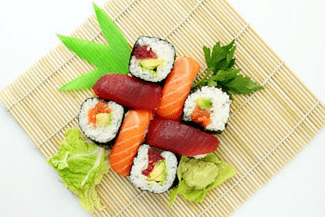
But those who successfully complete the Japanese diet will be valued more overweight.
If you want to see great success, create a sports program.Be sure to consume enough protein.If not, you cannot increase muscle mass.In the worst case, you will lose muscle.Other evil and large burdens must be avoided.
Japanese diet.Menu
All food must be fresh.The dish is cooked beautifully, you can play with flowers.Food and pleasure of food (slow food absorption) is also very important.
Breakfast
- 1 tanterine
- 1 cup miso.This Japanese soup provides lots of energy, but is low in fat.By the way, it consists of fish stock, tofu, algae, miso (flavored soybean paste) and green onions.Recipe below!
- 1 cup of green tea
Dinner
- 1 plate of the ground (raw fish with rice), with sauce sauce
- A cup of noodles with mushrooms
- 1 apple
- A cup of green tea
Dinner
- 1 part of sashimi (other fish plates), soy sauce and basabi (liver -hati, this paste is made of very acute water)
- 1 cup of whole wheat rice
- 1 orange
- A cup of green tea
In addition, the exercise is recommended (walking or riding a bicycle), as well as the pleasure of simple and small things.
And now about "good past" - Let's travel on time, in 1975
Japanese people are one of the healthiest people in the world with the biggest long life hopes, where they remain dangerous as a result of exemplary nutrition.At present, Nippon.com has published a study where he justifies good Japanese health reasons with their nutrients.Nutritionists have studied Japanese food habits for more than half a century.Results:In 1975, Japanese culinary habits were valued by the highest assessment.
Why the Japanese diet in 1975 is considered a diet model
For decades, Japanese culture has been influenced by the Western world, in particular, the habits of Western power that are spread in the country, and also bring diseases such as atherosclerosis and diabetes.The study in which the Japanese diet on mice was tested for decades - in 2005, 1990, 1975 and 1960.
Results:Rats have the best health conditions with diet plans in Japan since 1975. This rat group has the lowest risk of diabetes and healthy hearts.
Cause:The average Japanese diet plan contains mostly vegetables, fruits, algae and seafood in this particular year.Additionally, by 1975, the diet was dominated by various methods of fermenting spices and a greater variety of herbs.Additionally, the consumption of juices and sweetened soft drinks at that time in Japan was not as common as it is today – both drinks were considered harmful to health in large quantities.
After a period of 48 weeks, researchers found that mice, powered by the Japanese diet in 1975, were older and had better memories than mice who observed the 2005 diet.
But is it possible to convey these results to people?A study conducted by the Tokhoki University Study Committee in Sendai, Japan, "The Research Ethics Committee" Der Tōhoku Uni, Sendai, proves that the 1975 diet has the same beneficial effect on people.And a group of participants who took part in the 1975 diet during the 28 -day period beyond their indicators who followed the 2005 food plan. In the first group, cholesterol was lower, and the risk of diabetes.In a combination with an hour of training three times a week, the 1975 diet also reduces stress and increased endurance in groups of participants aged 20 to 30 years.In general, nutrients in Japanese style can also help reduce the level of lipids in the blood and visceral fats, which are considered dangerous for health due to metabolic activity.
Concluded, we can say thatJapanese power 1975Compared to modern nutrition in Japan - and typical for the West, food habits today are more useful in many ways.This healthier lifestyle and nutrition reduces the risk of diabetes, cholesterol in the long run, reduces blood lipids and visceral fats, weight loss is a positive side effect.
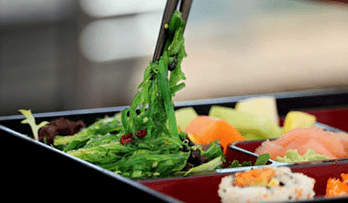
The 1975 diet, along with regular physical exercise, contributed to weight loss.
- Diversity:The daily menu usually consists of many different small dishes served with soup and rice - instead of one large major dish.
- Preparation:The three most popular types of dishes prepared in 1975 were boiled, steamed or raw, also roasted.Heat and roasting of freedom is more rarely used.This form of preparation has a consequence of the fact that the most important nutritional values are lost in heat.For example, oily fish, such as COD, contains important omega-3 fatty acids.After frying, fish only contain one third of the initial fat compared to raw fish, such as sashim.
- Ingredients:The 1975 diet is very rich in soybean products, seafood, tubers and green and yellow vegetables (including rnicons), fruits, algae, mushrooms and green tea.Eggs, dairy products, and meat are also consumed in 1975, but only in medium amounts.
- Herbs and spices:Instead of salt and sugar for taste, soy sauce, vinegar and sake, spices -fermented and fish stocks are used.
Miso soup- This is a national Japanese dish, quickly preparing and very aromatic.The main recipe contains very few ingredients - you can enrich it as you wish.Miso-Soup is often eaten for breakfast in Japan, but also as a snack or side dish.With filling, the soup becomes the main dish.
As a basis for soup, you only need two ingredients:
Mizopasta:This spicy paste consists of soybeans and - depending on variations - various cereals, such as rice or wheat.The ingredients are salty and fermented in a barrel with the help of a coji mold called SO.There is a bright and dark miso paste, sweet and sharp.Thus, the choice of varieties has a big effect on the taste of miso soup.Mizopasta is considered very useful because it contains probiotic lactate bacteria formed during fermentation.Dasha:Japanese fish broth is prepared from the battle of sea breeds and dried bonito flakes (packerel fish or tuna: "katsuo-bushi"-"katsuo-bisi").If you want to cook miso vegetarian soup, you can use dry shiitaka and, maybe, mushrooms maitaka or enoki not bonito flakes.
Miso Soup: Basic Recipe
For four small servings of miso soup, you will need the following ingredients:
- 750 milliliters of Dasha
- About two or three tablespoons of miso-tract
Use miso-poste of your choice: Apart from soybeans, Shiro-Miso also contains rice and has a slightly mild and sweet taste.Darker miso varieties, such as Genmai or Hatcho Miso, are spicier.
How to cook miso soup
-
Heat Dasha's broth - but not cooking.
-
Pass the miso-pass through the filter and stir well with the broth.First, use only part of the quantity, because Miso pasta has a very salty taste.Try soup, then add more to Miso Pasta, if necessary.
-
Add the ingredients of your choice in mistakes within a few minutes before serving.Serve the ready -made soup in a bowl.Speaking, in Japan, soup is eaten with sticks for food, and then broth is drunk from a cup.
Miso soup recipe: additives and seasonings
For your soup, you can prepare different ingredients.In Japan, a lot of attention is given to the fact that the ingredients are cut evenly - so that the soup that has become very beautiful.Here are some examples to enrich your miso soup:
- Rice or paste cooked (for example, buffer dog noodles)
- Tofu sliced by a cube
- Onions or green onions, cut thin rings
- Mushrooms, finely cut
- Kohlrabi, finely chopped
- Snow
- Spinach leaves, parking parking or mangold
- Fried vegetables such as broccoli, pepper or carrots
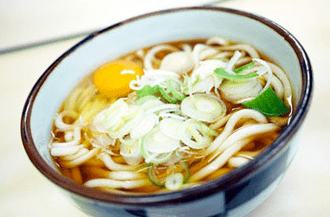
Although Miso soup is very sharp, it can be seasoned with several spices.For example:
- soy sauce
- A little like lime
- Japanese Wostershire Sauce
- A few drops of sesame oil
- A little ginger powder and / or chili.
- You can also cut fresh ginger and / or pepper into thin slices and leave soup.
Advice:For a lot of ingredients, you have to go to the Asian shop, but in the regional market you can buy fresh onions, mushrooms, kohlrabi and colleagues.
Tofu and other soybean products are now also produced in other countries.
JapanEat:
- rice, fish (raw and cooked), vegetables, all and algae
- Small portion
- various foods (up to 30 different per day)
- For breakfast soup, fish, rice, vegetables
- Fresh seasonal raw produce
hardly eat dessert don't eat bread
Drink Green Tea
Don't be fried in oil, just use a little vegetable oil to fry
They left a lot and ride a bicycle
The top three products
Rice/fish (algae)/soybeans (tofu)
Drink: green tea
And other secrets from Japanese
Want to be thinner at the waist 12 cm?- If so, do the following breathing exercises!
Important!
- Appear every day!
- Appear before breakfast!
- Never hurry!
- Feet place each other at a comfortable distance.Knee, of course, "see" ahead.
- Move body weight to the back leg, straighten the front.
- Take a breath for 3 seconds.
- Exhale for 7 seconds.Relax muscles.Tear your hand.
Exercise do it at the beginning of 3 minutes, then increase time to 10 minutes.














































































